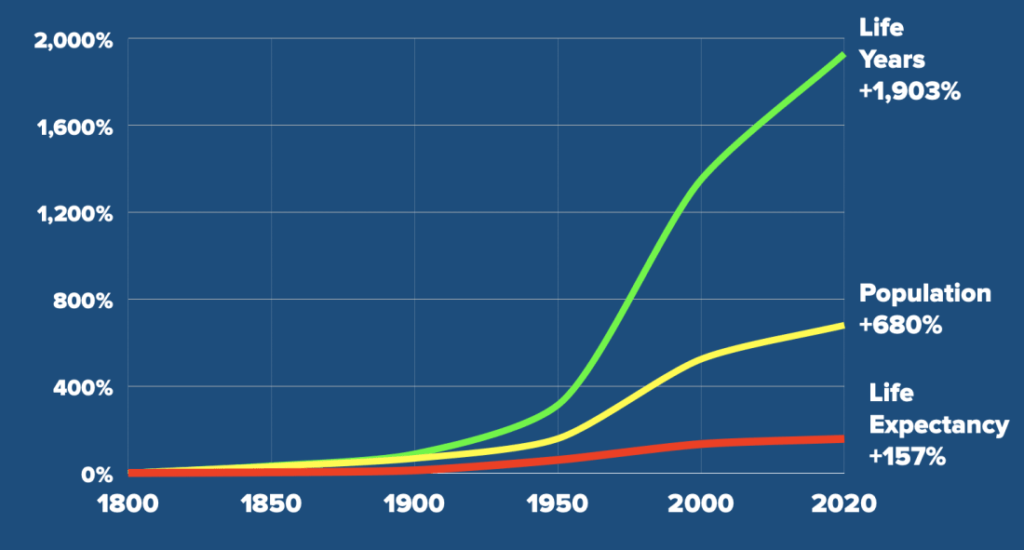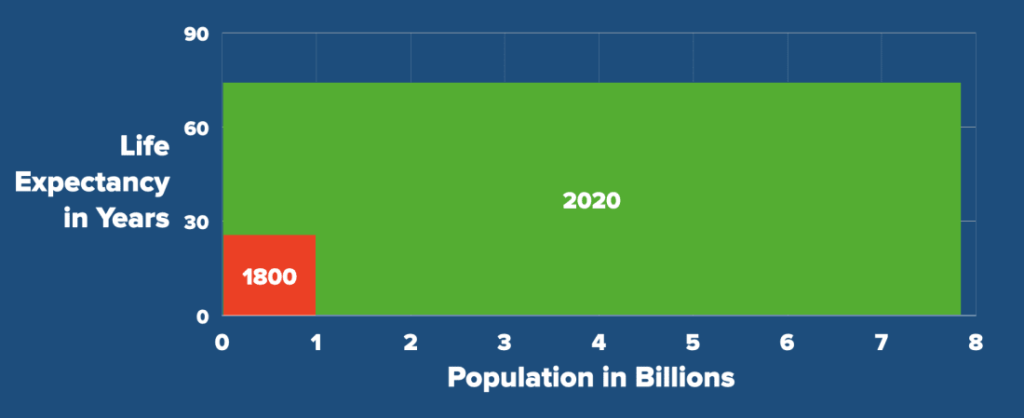This article explores the remarkable increase in total life years, which is the product of population growth and life expectancy. It shows how life years have grown by a factor of 20 since 1800, thanks to more people with the freedom to learn and innovate.
We measure life in quality and quantity. Quality can be a challenge because it is different for everyone. Measuring quantity is much easier—just count how many people there are and multiply that figure by how long those people are expected to live.
According to the website OurWorldinData, in 1800, there were 1 billion people on the planet. Today there are over 7.8 billion of us. That website also reports that life expectancy in 1800 was around 28.5 years. Fortunately for all of us, life expectancy has increased to 73.2 years, with men at 70.8 years and women at 75.6.
Total life years, then, is the combination of population growth and increase in life expectancy. In the last 220 years, life expectancy increased by 157 percent, and the population increased by 680 percent. Multiply those together, and you find that life years increased by 1,903 percent.

We can also look at this extraordinary growth by using a different kind of visualization. In the chart below, the population, measured in billions, is on the horizontal axis, and life expectancy, measured in years, is on the vertical axis. In 1800, there were 1 billion people and the average life expectancy was 28.5 years. The red box, then, represents 28.5 billion or the total number of life years in 1800.

We will use a green box to represent the total life years in 2020. That year, life expectancy was 73.2 years (i.e., 157 percent higher than it was in 1800). Between 1800 and 2020, the world’s population increased to 7.8 billion, or by 680 percent. So, the total life years in 2020 amounted to 571 billion – a 1,903 percent increase since 1800.
More people with the freedom to learn and innovate can share their creations in the marketplace, thus making life safer, healthier, and longer for everyone. People today get 16,315 more days to enjoy living compared to those in 1800. Since 1800, every one percent increase in population corresponded to 24 days of additional life expectancy. Total life years increased 2.8 percent for every one percent increase in population. Life years have grown by a factor of 20 since 1800, coming out to an average annual increase of 1.38 percent for the last 220 years. At this rate, life years double every 51 years.
You can watch a video of this story here:

